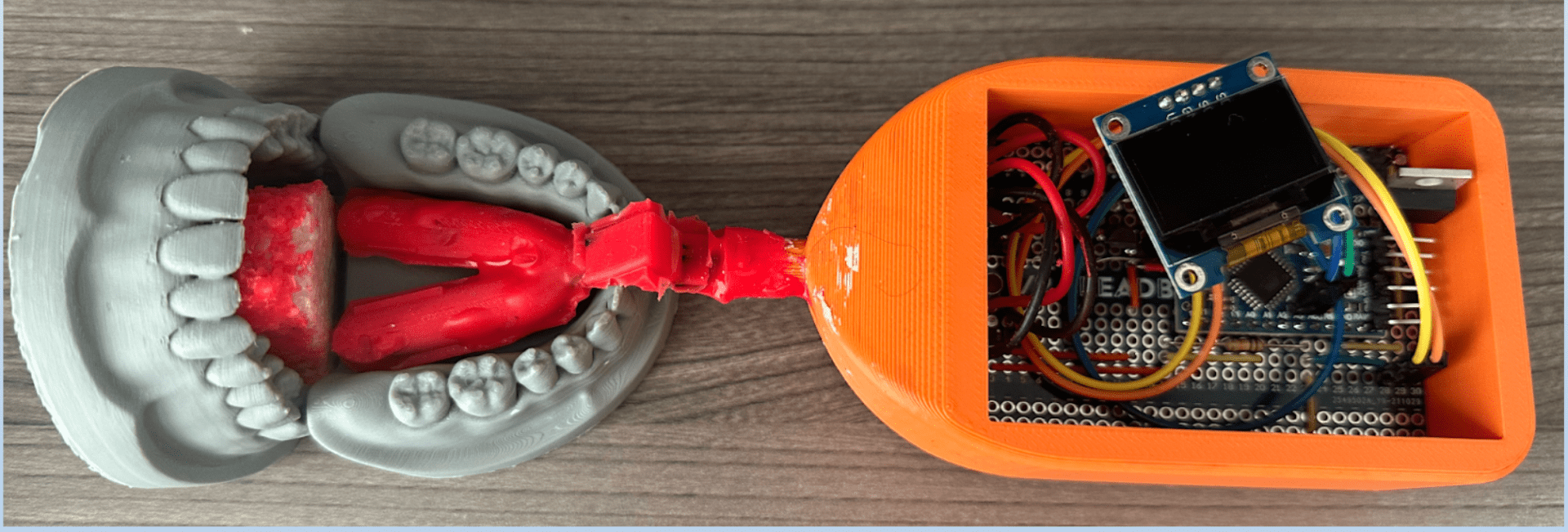Connect our team on LinkedIN!
Allie Barone, Giuliane Fuzetto Paschoal, Hirschel Nambiar, Marshall Nambiar, Rahul Shah
Pulse oxi-mates
Pulse oximeter that solves issues of racial inequalities and allows for more informed treatment planning
Our solution is a sublingual pulse oximeter. The device uses SMD and photodiode electronics that have increased light intensity to penetrate through the dense muscular tissue found in the sublingual pockets. The insertable mouthpiece is encased in food safe silicone and is able to conform to different anatomical mouth structures. Finally, the encasing houses the circuit board, battery, and microprocessor where a window shows the OLED displaying oxygen saturation values. This device is a portable and reusable device, favorable for clinical environments.



